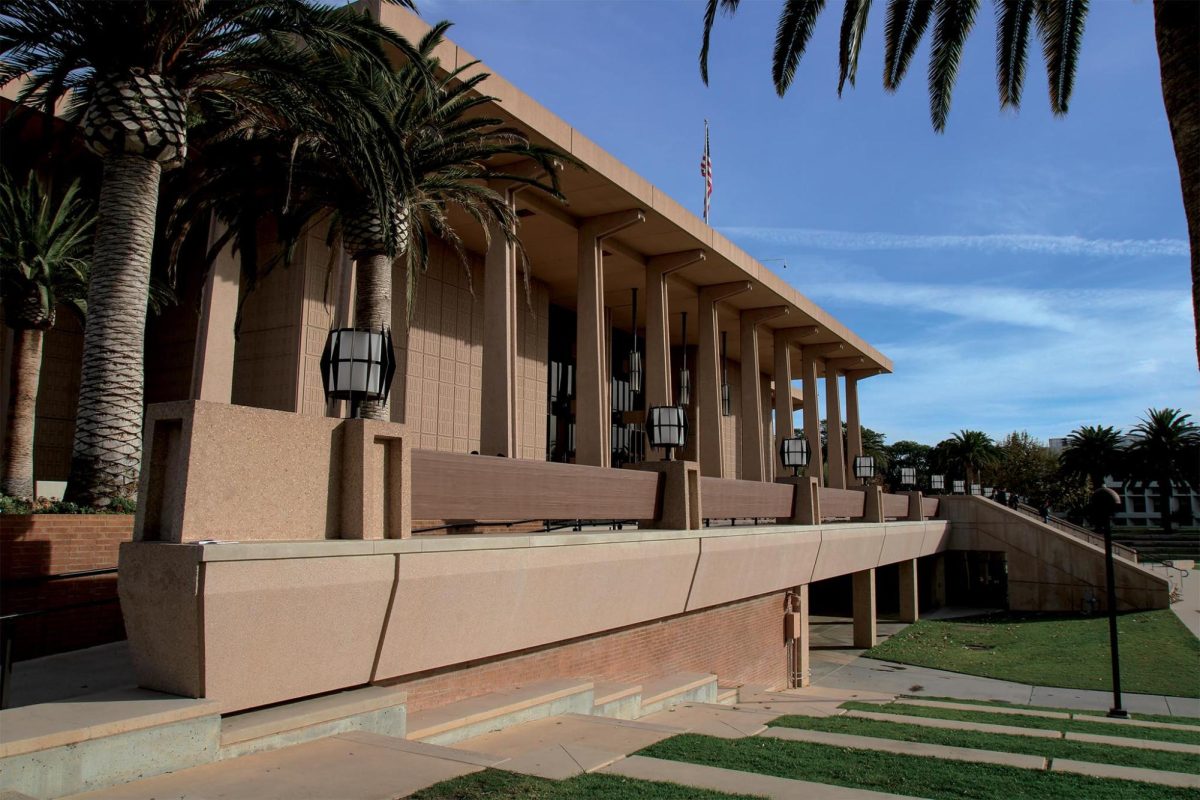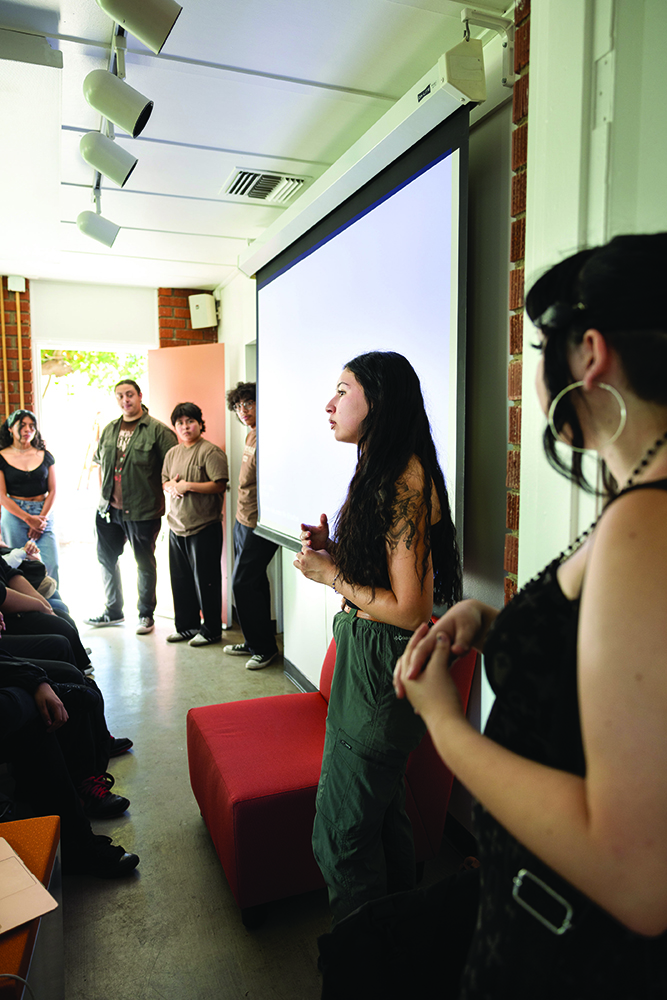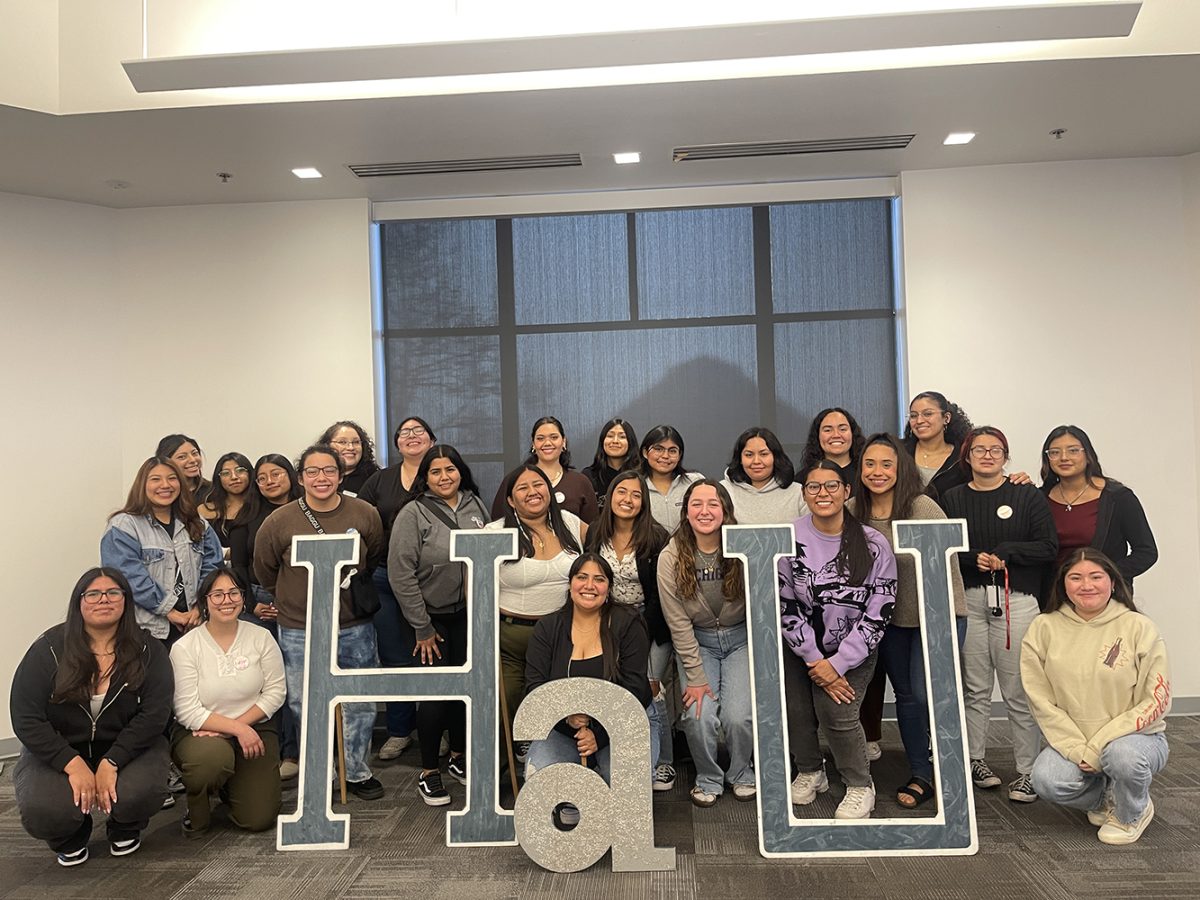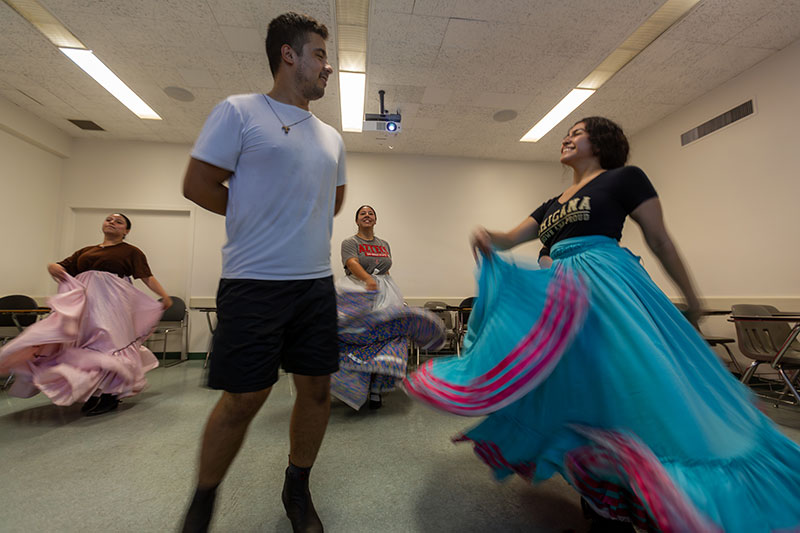Carmen Ramos Chandler heard the sound of the earthquake before she felt it. It sounded like 10 freight trains speeding directly towards her house, all at the same time.
It was in the middle of the night, just after 4:30 a.m. on Jan. 17, 1994. Her mattress sat atop a metal box frame with four rolling wheels. When the 6.7 magnitude earthquake hit, the vertical shaking motions forced her body up into the air. Then, the horizontal shaking motions rolled her bed out right from under her, while she plummeted to the ground.
Ramos Chandler is the current director of media relations at California State University, Northridge. But back then, she was a reporter for the Los Angeles Daily News. Following the quake, her newsroom was unsafe to enter. It had been damaged heavily, and she had to work from home while listening to the radio.
Her friend Tony visited CSUN shortly after the earthquake. He was shocked at the destruction. Piles of rubble, caved-in classrooms and parking structures. Cracks in nearly every wall. Staircases woven in jumbled messes that looked like an M.C. Escher painting. A chemical fire that broke out near Bianchi Planetarium and forced firefighters to wear hazmat suits. And he saw the iconic columns of the University Library were crumbling. They were bending. Some had been twisted nearly 180 degrees.
He came back hopeless. “The campus will never reopen,” he said.
But it did. The spring 1994 semester started in February, just two weeks behind schedule. It was a momentous reconstruction effort, made possible by several state and federal agencies and the leadership of CSUN’s then-President Blenda Wilson.
The earthquake occurred on a fault line that was previously undetected by scientists. According to the Southern California Earthquake Data Center, it “produced the strongest ground motions ever instrumentally recorded in an urban setting in North America.” Its strong up-and-down motions combined with side-to-side motions created a level of devastation that most buildings on campus were not equipped to handle.
Each of the 58 buildings on campus received some kind of damage. Some were in worse shape than others.
George Johnson, currently an equipment technician for the cinema and television arts department, was contracted to help record footage of the destruction. This footage was then sent to FEMA, or the Federal Emergency Management Agency, to prove the extent of the damage and to receive the appropriate emergency funds.
He and several other teams would inspect various buildings and capture footage on handheld video cameras. When deemed safe, they also stepped inside to witness books knocked off shelves, desks crumbled to pieces, staircases ripped from their walls, and piles of glass from broken windows.
Aftershocks, or a series of smaller earthquakes after the main one, made the work dangerous. One building Johnson was inspecting suddenly shifted because of an aftershock, and cement projectiles the size of a bullet shot out of the crumbling wall at high speeds.
It was harrowing work, but Johnson said he did not think about it that way in the moment.
“At the time, you understand your role is to help the school rebuild. Help the students out,” Johnson said. “You don’t think about that stuff at the time.”
After inspection, if a building was so damaged it was deemed too expensive to repair — or cheaper to tear down — it was demolished. Johnson compared it to car insurance. If an insurance company finds the damage is more costly than the value of the car, they will not try to fix it.
Four buildings on campus met this fate, and were torn down.
One of them was the South Library. It was built in 1959, and was the first permanent building to be constructed on campus back when it was known as the San Fernando Valley State College. It was originally near Santa Susana Hall. The building was torn down and not replaced.
Another was the Fine Arts Building, built in 1960. It was the precursor to the modern-day Manzanita Hall and located in a similar spot. Much like its present incarnation, it held a combination of classrooms, faculty offices, and venues for fine art events. It was demolished three years after the earthquake, being deemed structurally unsafe.
The University Tower Apartments, a seven-story tall dormitory constructed in 1969, was also demolished four years after the quake. However, the apartments had been closed since 1991 due to poor plumbing systems and asbestos contamination.
A five-level concrete parking structure, built just 18 months before the quake, famously bent like rubber due to shoddy construction that didn’t meet earthquake construction codes at the time. It was the only building on campus to completely collapse. To this day, it remains one of the most iconic and memorable images following the Northridge earthquake. It was demolished.
While the spring semester may have started in February, reconstruction efforts were far from finished. Professors worked out of their cars, trailers and houses in nearby neighborhoods. Students had classes under trees, on lawns, fields and inside large mylar tents. A 10,000-square foot tent named the Lindley Library Dome temporarily housed fine arts collections and acted as a makeshift study area. All the while, construction workers and engineers from all around the country flew in to help.
President Wilson was adamant the reconstruction would not get in the way of students’ success.
“She told me, ‘Socrates did not teach in the classroom. Aristotle did not teach in the classroom,’” Ramos Chandler said, quoting Wilson. “‘All I need to ensure education takes place are faculty who are willing to teach and students who are willing to learn.’”
Months after the earthquake, Ramos Chandler was working at CSUN. There were still groups of engineers on the campus sent by FEMA to assess damage and assist with reconstruction. One of the engineers let her in on just how destructive the earthquake had been for the campus.
“It was as if a giant on campus had reached down and picked up the University Library, the entire building, and lifted it up about 10, 15 feet, and then let go,” Ramos Chandler said. “He said that’s what it did to every single building on campus.”
In 2023, CSUN buildings are constructed a lot differently. All campuses in the California State University system are required to go through an intensive seismic review process for the construction of any new building, a process that didn’t exist prior to the Northridge earthquake.
It begins at the very start of the planning stage, with engineers creating computer models and simulations to determine structural weak points. These models are also used on pre-existing buildings to determine if they need to be seismically retrofitted, or upgraded to better withstand future earthquakes. Then, seismic engineers remain present throughout the entirety of the construction process to make sure things are going as planned.
Kenneth Rosenthal, the associate vice president of facilities development and operations, said that the safety of all students is “paramount” when designing new CSUN buildings.
“That’s the number one thing we’re concerned with,” he said.
The seismic assessments cost a considerable chunk of change, but Rosenthal thinks it is well worth it. He says it is better to pay a small amount now than pay an even bigger price tag to repair a faulty building damaged in a future earthquake.
Not only does it cost money, it also costs time. Rosenthal says most people do not expect construction projects to take as much time as they do. The planned Sierra Hall renovation, for instance, is planned to take around three years.
“The Northridge earthquake happened in 1994, and we fundamentally didn’t finish rebuilding the campus until roughly 2004, so it was a 10-year process,” Rosenthal said. “It took a decade to put the campus completely back together again.”
If the “Big One” ever rears its head soon, it is safe to say that CSUN will be prepared.
“If we had an earthquake of that size again, I guarantee you, I want to be at CSUN,” Ramos Chandler said. “I feel safer at CSUN than anywhere else in Southern California.”




